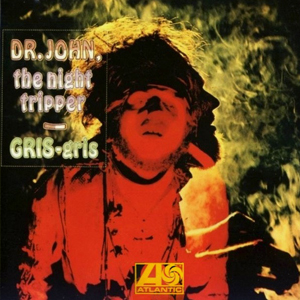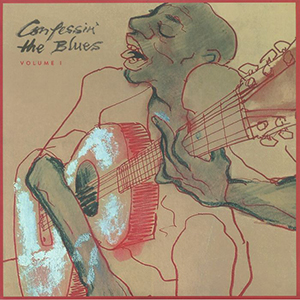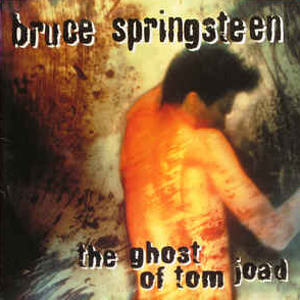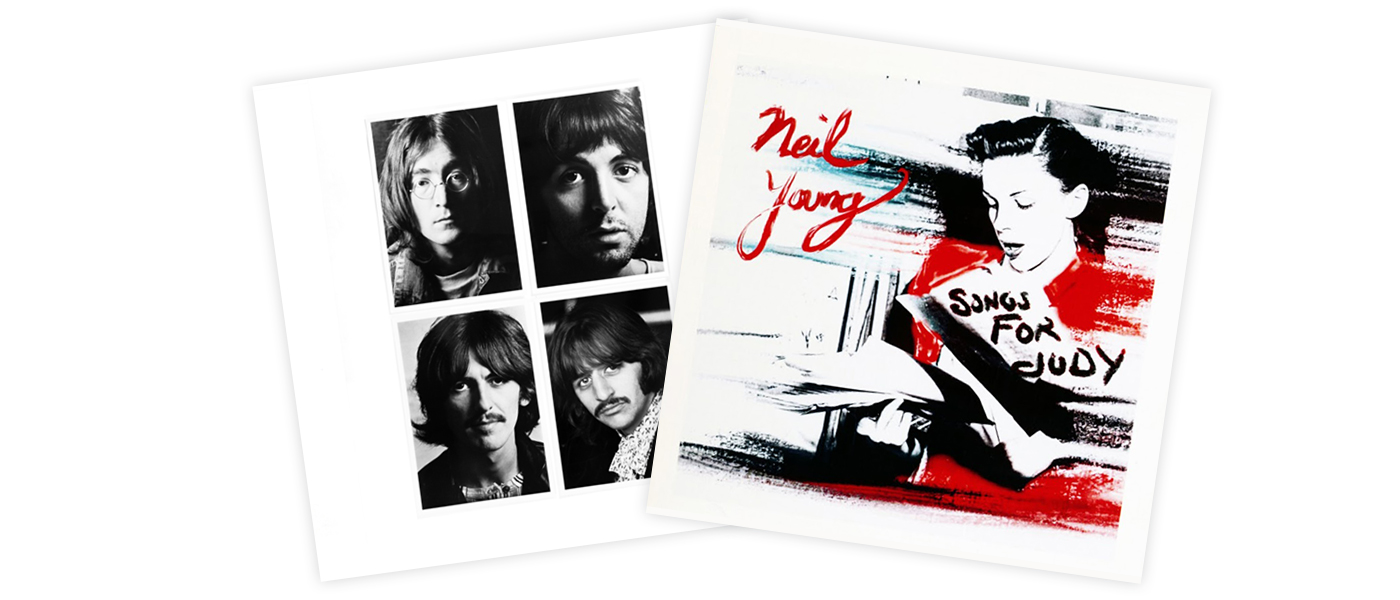
Mac Rebennack introduced the world to his alter ego, Dr. John, via his debut album in 1969. He’d offered the role to a friend, and intended to hang in the wings as a music producer and idea guy. His friend was reticent, so Mac took to the stage himself. As a New Orleans Voodoo man. A mystery. It’s not safe for me. The only time I dabbled in the Dark Arts as a wayward youth, I damn near burnt my mom’s house down. True story. I reckon if there were going to be a soundtrack to that silly scene, Gris-Gris would not be it. They’d use it for something that was cool. The first season of True Detective, maybe.
I’ve seen Dr. John live on many occasions, and I’ve been introduced to him once. He did not seem to be impressed, but I didn’t take it personally. He’s seen some stuff. Plus, he was busy. Told my buddy to “hurry up and take the picture, I’m fixing to go to work.” Work was pronounced “work,” the picture was snapped, he was immediately whisked to the side stage (in a golf cart!),and was bathing in applause 30 seconds later. He opened with “Iko-Iko” off of his Gumbo album, which was made up of his take on a bunch of New Orleans standards.
Secrets Sponsor
But Gris-Gris is different than all that. It’s weird. Weirder than I was when I was burning candles in my bedroom, even. It didn’t chart but is considered a masterpiece in retrospect — a New Orleans gumbo of psychedelic acid free-form swamp funk. Rebennack announces himself right away as “Dr. John the Night Tripper,” a sobriquet within a byname, layers of implications over and around dark polyrhythms and indeterminate Creole chanting. I think. There’s much I don’t understand. There are fog and mist, and smoke and mirrors.
“I Walk On Guilded Splinters” has been covered and almost popularized by a host of artists, but the Gris-Gris version is more sparse and spooky than any I’ve heard. I’m to understand that he performed shows of the era in full Mardis Gras regalia, headdress, totems, and the whole shebang. What a joker. Dude had just gotten out of prison in Louisiana and fled to LA to hide in plain sight. Gris-gris, as I understand it, is an amulet that brings the wearer good luck. More precisely, it wards off bad luck. It didn’t work. Trouble found him anyway in the form of more legal woes and dreadful addictions. Hell, Rabbenack had already been shot in the hand, causing him to switch from guitar to bass to piano before the Gris-Gris era. Through it all, the man has not only endured; he’s thrived. Who’s to say how much worse off he’d have been without the charms? Maybe they worked, after all…
Jackpot Records is new to me, but if the rest of their work is in line with this release, they’re doing just fine. Kevin Gray mastered this one from the original tapes, although I suspect that some 1’s and 0’s have been introduced somewhere along the chain. Regardless, it sounds great. The neon green pressing was done at RTI, but the coolest float in this parade is the mono presentation. If you’re up for a nighttime trip down a dark and disorienting alley, you could do no better. It’s like a walk through a freaky funhouse. Designed to feel dangerous, but all in good clean fun. Well, good fun anyway. You might get a little sticky.

It seems like just yesterday I was reading about Los Lobos reissuing their debut album on vinyl for the first time. The original was a 1978 private press release called Just Another Band From East L.A., and people have paid at least as much as $300 for it online. It’s tough to know how many were made. The official number seems to be 1,000. Some band members have said in interviews that there are upwards of 3,000 floating around, “mostly in California.” Anyway, the reissue happened in 2016, and I snagged one at the Fillmore a couple of months back for $25. The merch lady tried to sell me on the idea that it was from a stack of original pressings that “one of the guys found in his garage, or something.” I didn’t believe her, but I was hesitant to engage in a discourse about any of it. And, unless someone in the band’s organization was majestically prophetic in the Disco Age, I was right. The band’s website info is printed on the back cover. On to the next mystery…
The next mystery is the lyrical content, but at least I know why I can’t decipher them this time. The band is singing in Spanish. Clearly. Ironically, my first encounter with Los Lobos was when they played in Atlanta on a double bill with Dr. John in the early ’90s. I left their set early to catch Col. Bruce Hampton and the Aquarium Rescue Unit down the road apiece in Athens later that evening. I had the energy for that kind of endeavor then. I was still spacey though. Was in such a hurry to get where I was going that I pulled out of the gas station with the pump still in my tank. The attendant was pleasantly flustered. On to the next adventure…
Secrets Sponsor
The entirety of Just Another Band is made up of traditional Mexican music. “Chicano Rock,” the websites say, but I don’t hear a lot of Rock. Not in a customary way, at any rate. It’s lively though. Upbeat, exciting, and fun. It’s the second Los Lobos long player on my shelf that is composed of Mexican Folk flavored tunes when you count La Pistola y el Corazon. I love them both. Just Another Band is a little rougher around the edges, which suits my fancy just fine. Perfect soundtrack for road trip hijinks and gas station debauchery.
There are some interesting things happening in the mix too. Instruments (some of which I’ve never even heard of) are panned from channel to channel mid solo. There’s some between-song banter, some laughter, and much merriment. Not a ton of three-dimensionality, and a little less air in the room than one might hope for, but a blast none the less. The album will please all but the most finicky among us. If you can’t enjoy this listen, you might do well to check your pulse. The single skinny disc was pressed at RTI and is almost flawless, which is a nice touch for an independent under the radar reissue. These are still available online, but you may have to dig a little deeper than usual. The rewards are worth it. Easy.

My vinyl collection has been sadly lacking in the Howlin’ Wolf department for… ever. I’ve been keeping an eye out for an affordable (preferably sealed) copy of his Chess Box, but people ask a lot for those. It would look nice on the shelf with my Muddy and Chuck Berry sets, but the mastering on the Chess Box series is not all that it could be. It’s nice to have all the songs in one place, and the collections are definitive, but the presentation is not special. The recent reissue of Wolf’s Moanin’ in the Moonlight is a different story. Perhaps not a complete story, but a fine condensation of a Master’s work, certainly.
Howlin’ Wolf was a giant. In stature, in influence, and as a performer. The Rolling Stones famously introduced him to American television audiences in 1965 on Shindig! (the Exclamation point is part of the show’s actual title, it’s not for emphasis.) The performance is zany. Wolf is almost certainly lip-syncing in front of a live studio audience of kids that likely had no frame of reference for what they were witnessing. With their eyes or their ears. He points and shakes his massive index finger accusingly throughout the performance of “How Many More Years,” veins bulging in his neck. Not sure if the Stones performed during that show, but I kind of hope, for their sake, that they did not. Not after all that. The Stones had a hit with their cover of “Little Red Rooster” the year prior. Jim Morrison was wont to grab ahold of a theater’s curtain and ride it to the rafters at the onset of, especially rowdy Doors shows. Seems that he copped that from Wolf’s bag of tricks, but that might all be hearsay. Little Feat’s take on “Forty-Four” on their debut album is almost a note for note replica of Howlin’ Wolf’s, and that is not hearsay. It’s obvious.
In many ways, Wolf was atypical of the teaming Blues artists who left the Delta for Chicago in the mid-20th century. He was already financially solvent. Wolf got his GED while in his 40s. He studied business and accounting. He can be seen skewering Son House about the evils of drinking on film during the 1966 Newport Folk Festival. And he loved and honored his wife until his death in the mid-70s. He was an American original, and he wrote his own story.
Much of that story can be heard on Moanin’ in the Moonlight which was his first long player but was a compendium of earlier single sides released on Sun Records and Chess Records. The names of some of the players are amongst the most revered in the history of Electric Blues: Otis Spann, Willie Dixon, Willie Johnson, Hubert Sumlin (obviously), and even Ike Turner who had scouted Wolf for Sam Phillips’s label. The original mono tapes were used for mastering this edition, and the sound fills the room just like the Wolf himself. It’s rough but alive. The pressing is great, not flawless. The material is phenomenal and without precedent. The growls, the howls, the shouts, and the shivers are all present in the mix. This is a fine addition to any Blues fan’s collection. Don’t whiff on this one.

I’ve been a bit wary of Rolling Stones releases over the last few years. Had a few bad experiences, mostly around poor quality control. I didn’t think I was going out on a limb by purchasing Confessin’ the Blues Vol. 1 because it’s not a Stones release. It’s a compilation of classic Blues recordings that was “curated” by the Stones. I would have been going out on a limb by purchasing the 10-inch set that compiles the two compilations (Volumes 1 and 2) in a single package with extended liners and additional artwork. Because that one’s expensive. A little too risky for me.
I had a European compilation similar to Confessin’ on CD when I was a kid, and I think I preferred it to this set — at least the first volume. The CD was called Real Stones, and it was made up exclusively of songs that the Stones had covered. The Stones covered many of the songs on the Confessin’ record, most obviously “Little Red Rooster” by Howlin’ Wolf, and Robert Johnson’s “Love in Vain.” But there are songs on this set that I was unfamiliar with too, and I think that’s theoretically pretty cool. In practice, I prefer the material that was already recognizable to me. I may be vulnerable to some familiarity bias or something, loathe as I am to admit it. But the Classics are classics for a reason. And I much prefer the material on this set by Muddy, the Wolf, Chuck, and Mississippi Fred than I do the stuff by Slim Harpo and Big Maceo. All of it is good. Some of it has the power to change lives.
Unfortunately, the production is pretty pedestrian. The John Lee Hooker set that we explored here last month has way more bottom end and thickness than the Hooker material on Confessin’. The Howlin’ Wolf record that we explored just moments ago is way livelier and impactful than the two Wolf tunes in this set. The Confessin’ set seems kind of like a celebrity first pitch that doesn’t quite make it to the plate. It’s a blast to have all this greatness in one place, but the middle-of-the-road production dampens the set’s significance. It’s a little bright and lacks a lot of punch.
The packaging is a different story. Ronnie Wood’s cover painting is ten tons of cool. And I bet that 10-inch set is a pleasing exploration from a visual and tactile perspective. But if the pressings are as suspect as the one I hear now; I’d be hell-bent on getting my money back. (It probably doesn’t count as a Pro Tip to suggest ordering that one online via the Behemoth from Seattle if you can’t pass it up. That site is legendary for liberally accepting returns.) Vol. 1 has some cool liners, photos, and inner sleeves to recommend, but they don’t warrant the purchase price unless you have disposable income and excess storage space. I won’t be picking up Vol. 2, and that’s probably the tidiest summation of this listening experience.

And that brings us to The Ghost of Tom Joad. I’d been saving myself for this Springsteen title for many years. I do weird stuff like that. There are Dylan titles that I’ve yet to explore, and I intend to treat them as new releases once his output dries up. If it ever does. The Tom Joad record is polarizing amongst both critics and fans. I remember reading about it in the Springsteen biography by Peter Ames Carlin (which is not polarizing, it’s plain great). It seems that the album is revered more for its lyrics and storytelling than its melodies and musical composition. When I saw that Springsteen’s catalog was getting the vinyl reissue treatment, I vowed to leap finally.
Count me among the contingent that views this as some of the Boss’s finest work. I’d have loved to have caught an installment on the one-person tour he took in support of the album. (The recent Netflix documentary of his one-person Broadway run is a fine stand-in.) The lyrical content is as timely now as it was in 1995. I mean, disenfranchised Americans, uneven distribution of wealth (a timeless topic, it seems), suspicion of immigrants… It could have come out last year. It’s a commentary on Springsteen’s commentary to realize that we’re still right where he was writing from over two decades ago. According to the Carlin book, Springsteen pulled much of the content from newspaper headlines of the day. And here we are. It’s 2019, and our federal “government” is shut down over some flimsy imaginary structure made out of fear and limited insight. Maybe Bruce has a sequel in the works.
The production on Joad is sparse but shinier than Springsteen’s first acoustic album, Nebraska. There are a few small combo arrangements, but there are more solo numbers. Some of the tunes drift by before you can even grasp for them, but they’re all mostly great. And it’s true; there are no toe tappers to be found on this record. But the title track is as memorable to my ears as “Dancing in the Dark,” albeit for entirely different reasons. Springsteen is a Master. He’s got a million arrows in his musical quiver. He can get his point across in a vast variety of ways. The Ghost of Tom Joad is a literary experience as the Steinbeck book that birthed the character of Tom Joad in the first place. One might do well to listen with the included lyric sheet handy. Or not. The experience is for the listener, obviously, and we all come to these types of topics from our angles. That’s true of all real art.
Here’s where the party gets rained out: the mastering is plenty impactful with warm bass organ sounds and airy acoustic strings throughout. The pressing, apparently from the GZ plant in the Czech Republic, is an embarrassment. The online audiophile forums tell me I didn’t get a defective single copy, but that the entire run was compromised — Ticky, poppy, crackling, and sad. The work was done for an analog approach, but the ball was fumbled on the one-yard line. Let’s hope for a future repress from a more reputable plant.


